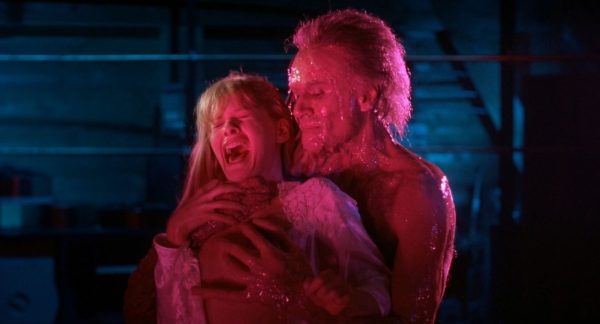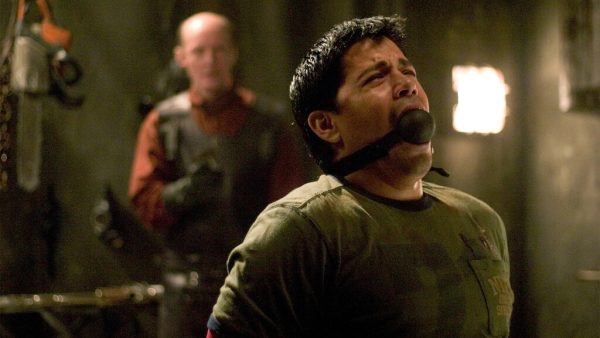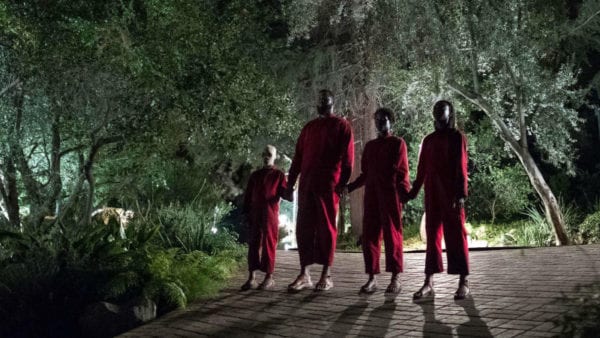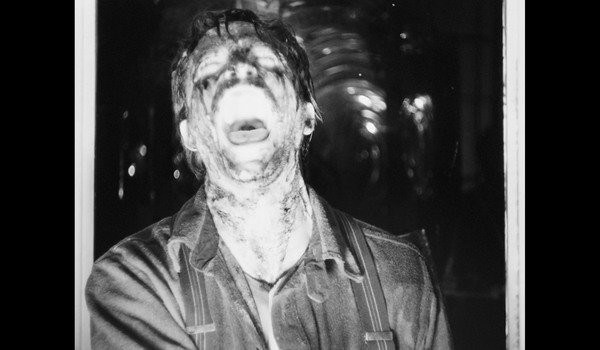Casey Chong looks at ten directors with great sophomore horror movies…
Any filmmaker hopes they can hit the jackpot out of the gate, and many manage to impress with their directorial debut, earning positive responses from both critics and audiences. Then comes the next challenge of continuing a winning streak without falling victim to the dreaded sophomore slump. Here, we focus on ten directors noted for their work in the horror genre, from Wes Craven to Jordan Peele and Robert Eggers, and their sophomore films….
Wes Craven – The Hills Have Eyes (1977)
Like the hard-to-watch Last House on the Left due to its graphic depiction of violence and sexual depravity, Wes Craven’s sophomore follow-up is definitely not for the squeamish. The Hills Have Eyes is an uncomfortably tense and provocative horror cinema. The kind that doesn’t shy away from its bleak portrayal of cannibalism seen in the hillbilly, mutant-looking family terrorizes a vacationing American family.The movie also draws a similarity with Sam Peckinpah’s controversial 1971 classic Straw Dogs, notably on the part of how far an ordinary family would go in the name of survival.
Craven equally has something to say with The Hills Have Eyes as he taps into the class divide between the privileged middle-class family and the marginalized clan of cannibals, who are actually victims of the radiation exposure due to the government’s nuclear testing in the desert. The Hills Have Eyes spawned a lesser 1985 sequel before Alexandre Aja excelled with a better-than-expected 2006 remake that actually improved upon the original in many key areas.
Stuart Gordon – From Beyond (1986)
A year after Stuart Gordon made his memorable directorial debut with the dark horror comedy Re-Animator, he reunited with Jeffrey Combs in From Beyond. Dennis Paoli, who previously co-wrote Re-Animator, boasted a simple but wildly entertaining setup: A machine dubbed the Resonator allows anyone within its proximity to see or even experience things beyond the realm of reality. Combs plays one of the scientists, highlighted by his gradually unhinged performance once he becomes the victim of the Resonator-causing body horror. At one point, we see him devouring human brains in the hospital and even has a gross-out phallic stalk bursting out of his forehead.
From Beyond also pushes its lurid subject of sexual perversity to a weirdly fetish level, notably with the bizarre reappearance of Dr. Pretorius in a giant, mutated blob who enjoys carnal pleasure. Gordon doesn’t shy away from excessive gore and violence, while the special effects team show no restraint when it comes to the outlandish creature designs from the floating eel-like beasts to the brain-eating Pretorius monster. It’s the ultimate, explicit B-movie horror through and through from the twisted mind of Stuart Gordon.
Clive Barker – Nightbreed (1990)
Clive Barker gave us the iconic Pinhead in the 1987 grisly horror Hellraiser, but he stumbled somewhat with his sophomore follow-up in Nightbreed. This is especially true with the film being severely compromised by the studio interference, resulting in a mess of a theatrical cut. It would take nearly 25 years before Barker finally got his wish to restore his original vision. The director’s cut runs 20 minutes longer than the theatrical release, even though it features technically around 45 minutes of new footage, totalling a two-hour running time. The result is more coherent in Barker’s storytelling, allowing us to better understand the characters’ motivations.
Based on his 1988 novella Cabal, Barker does a good job blending dark fantasy, creature feature and violent horror with a dash of serial-killer tropes. The latter is evident with the introduction of the burlap mask-wearing Dr. Philip K. Decker played to sinister perfection by the soft-spoken David Cronenberg. His creepy presence is the highlight of Nightbreed, and so is the hidden underworld of the fictional Midian beneath the cemetery, which is filled with freaks and monstrous creatures.
The movie also features extensive makeup effects, while packing in enough gore and violence. Beyond Barker’s genre know-how direction, he also manages to slip in a subtle social commentary on xenophobia and prejudice against the outsiders, which in this case, the Nightbreed community wanted to live in peace while desiring a normal life just like everyone else.
Mick Garris – Sleepwalkers (1992)
The highly prolific Stephen King wrote his first original screenplay not adapted from his books or any form of media for Sleepwalkers, with Mick Garris, who previously directed the 1988 cult classic Critters 2: The Main Course, calling the shots here. The idea of combining them both working together on a horror project for the first time seemed intriguing, but the movie was slammed by critics at the time and only managed to scratch its way to recoup its $15 million budget with a not-so-stellar $30.5 at the box office.
Sleepwalkers is divisive, given its bonkers tone that blends vampirism, creature feature and pitch-black horror comedy borderlines between the absurdity and perversity. We have a pair of shapeshifting human creatures, a.k.a. “sleepwalkers”, played by Brian Krause and Alice Krige in their game performances, who kill people mercilessly and survive by feeding off the lifeforce of virgin girls. But get this: They also happen to have a weird, incestuous relationship, and despite their seemingly formidable beings, they are afraid of cats. Even the regular, domestic cats can potentially kill a shapeshifter with a feline scratch.
Garris embraces its twisted and offbeat tone wholeheartedly without succumbing to a self-parody. Just enough to balance out each other with a mix of grim horror, B-movie vibe (the cheesy effect on the sleepwalkers’ shapeshifting appearances) and tongue-in-cheek humor (“Cop kebab!”, “No vegetables, no dessert. Those are the rules.”). Garris also doesn’t shy away from the copious display of graphic violence and gore, particularly in the second half of the movie.
Guillermo del Toro – Mimic (1997)
Guillermo del Toro’s second feature after his acclaimed Cronos and his first in the English language may have been a victim of studio tinkering, but Mimic showcases the Mexican director’s signature filmmaking touches that will define his later works: a B-movie horror influence, unique monster design (which in this case, a mutated insect the size of a human being), atmospheric cinematography and the nifty use of underground settings. The latter is especially true with Mimic’s primary setting within the dark subway tunnels beneath New York City.
The movie is often drenched with a foreboding sense of dread, and how del Toro effectively builds up the tension to a breaking point. The theatrical cut may have been choppy in places, but thankfully, the eventual director’s cut released in 2011 significantly improves del Toro’s sophomore effort. It’s closer to what he had intended, with the story and character development being more defined.
Eli Roth – Hostel (2005)
The arrival of then-debutant Eli Roth with Cabin Fever proved he had a knack for gratuitous violence and gore and in Hostel, he chose to level up his no-holds-barred filmmaking style, with a film centring on three backpackers (Jay Hernandez, Derek Richardson and Eyþór Guðjónsson) travelling the titular hostel in Slovakia. What begins as a sleazy fun of sex, nudity, and plenty of beautiful women soon turns into a nightmare.
Roth doubles down the sadistic violence and gore as graphically stark as he gets, leaving an indelible mark of a then-new “torture porn” subgenre. It’s difficult to stomach once the torturing and killing starts, but beyond Roth’s exploitative nature, he also subtly slipped in a pitch-black social commentary on the dark side of tourism and human nature. The surprise hit of Hostel paves the way for a sequel two years later and a direct-to-DVD third movie, even though the latter is noticeably absent with Eli Roth’s involvement.
Mike Flanagan – Oculus (2013)
Horror maestro Mike Flanagan proved his range with Oculus, his second feature subverting expectations of what we usually see in the supernatural horror tropes. Jump scares often dominate in this type of genre, and while Flanagan still includes them, he only does so sparingly. Instead, he’s more interested in delving deep into the siblings’ (Karen Gillan and Brenton Thwaites) psychological trauma as they determine to destroy the antique mirror which has cursed their family since childhood.
Oculus is a deliberate slow burn that gradually creeps on you while Flanagan incorporates parallel storytelling, which alternates between the past (the siblings’ childhood era and their parents) and the present. Movies that rely heavily on flashbacks can disrupt the narrative momentum if they are not tread carefully. But Flanagan manages to keep things engaging throughout the movie, and it helps that he pays more attention to the characters. Not to mention his knack for seamlessly integrating both past and present timelines and how they gradually affect each other, since the mirror can blur one’s perception of reality.
Jordan Peele – Us (2019)
Like Get Out, writer-director Jordan Peele blends psychological horror tropes, dark comedy and social commentary in Us. He even widened his scope by examining everything from the fear of outsiders (the doppelgängers, a.k.a. The Tethered) to the class inequality, oppression and duality. The kind of metaphor-heavy storytelling meant for us to debate and interpret what Peele has to say in his sophomore effort.
The introduction of the Tethered is genuinely creepy, while Peele has a knack for inducing dread and ratcheting up the tension. This includes the ominous 1980s-set prologue set in an amusement park and a nerve-racking moment that pays homage to the home-invasion thriller. The movie equally benefits from a stellar cast, notably Lupita Nyong’o and Winston Duke with their solid performances as a married couple with their two children (Evan Alex, Shahadi Wright Joseph) dealing with the mysterious presence of the doppelgängers.
Robert Eggers – The Lighthouse (2019)
Robert Eggers first came to prominence with his well-received directorial debut The Witch. A new, acclaimed voice to the elevated horror subgenre, he made his mark for the second time in The Lighthouse. Shot in atmospheric black and white by Jarin Blaschke, there’s an immediate sense of ominous dread while the emphasis on the contrast and shadows makes the movie all the more unsettling. Eggers even goes as far as framing his movie in a square aspect ratio, which reflects the claustrophobic feel of the late 19th-century story about the two lighthouse keepers (Willem Dafoe and Robert Pattinson) stationed on a remote New England island.
It’s a slow-burn horror infused with deep paranoia and how these lighthouse keepers’ sanity is ultimately tested, especially after they find themselves stuck on the island longer than expected due to the raging storm. The movie, of course, wouldn’t have worked if not for the subtle performances of Willem Dafoe and Robert Pattinson as they successfully inhabit their characters’ psychological torment and mounting desperation.
Damian Mc Carthy – Oddity (2024)
Damian Mc Carthy made a promising debut in Caveat, giving the otherwise familiar haunted-house tropes a refreshingly non-linear and twisty spin. His sophomore film has again sees the writer-director explore a similar concept: non-linear storytelling, and this time, an introduction of a creepy-as-hell wooden dummy instead of his first movie’s toy drumming bunny. Not to mention, the movie primarily takes place in a country house in a remote location, and Mc Carthy goes straight for the jugular right from the start, echoing a tense home-invasion horror style brimming with dread and tension.
The story also moves like a puzzle piece with its whodunit-like narrative structure, while Mc Carthy knows well how to use jump scares effectively without resorting to cheap thrills. He favors a deliberate build-up before hitting the panic button when you are least expecting it. Oddity gets an extra boost from Carolyn Bracken’s scene-stealing dual performance as Dani and Darcy, particularly the latter one as the no-nonsense blind, white-haired medium who owns a shop selling peculiar items.
SEE ALSO: 13 Great Obscure Horror Movie Gems You Need to See
What other filmmakers deserve a spot on this list? Be sure to let us know on our social channels @FlickeringMyth…
Casey Chong






















